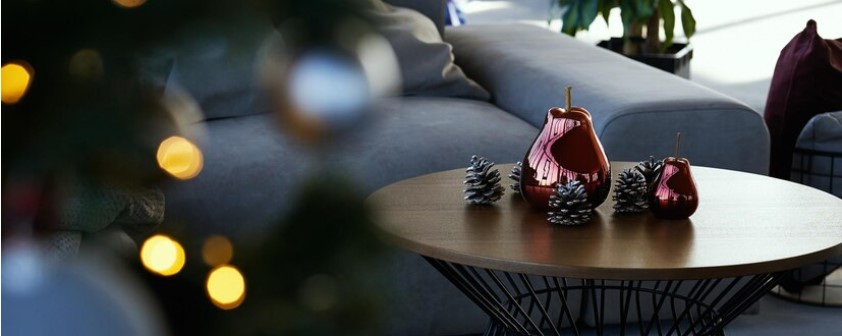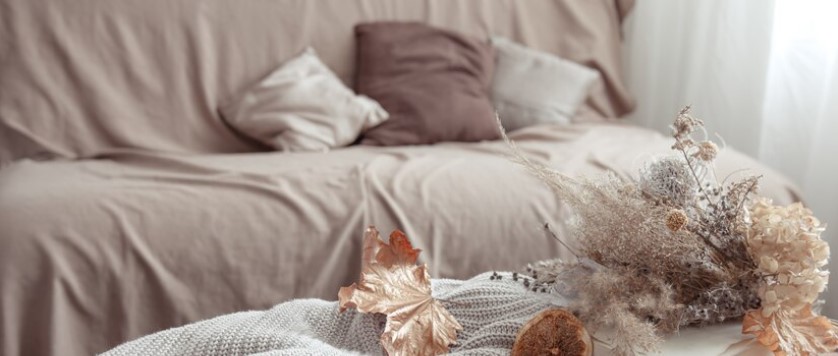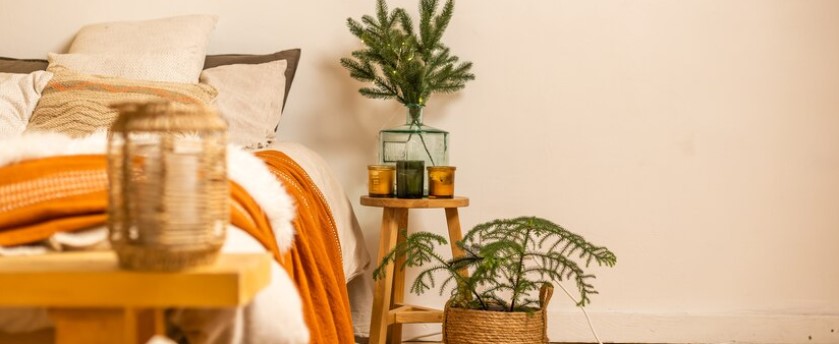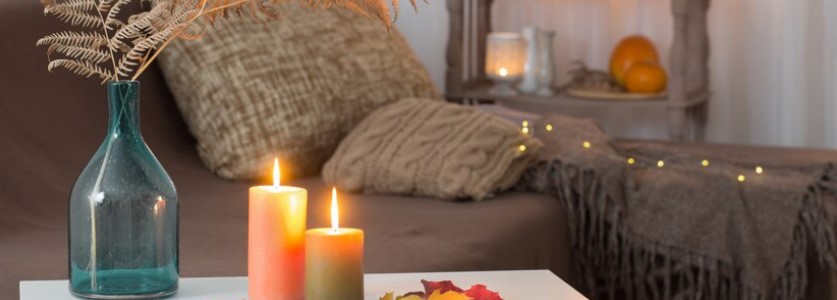“The Best Ways to Create a Cozy and Inviting Living Room” is an article that provides tips and ideas on how to transform your living room into a warm and welcoming space.
The article highlights various design elements, furniture options, and decor accessories that can be used to create a cozy atmosphere in your living room. Whether you prefer a traditional, contemporary, or eclectic style, the article offers suggestions to help you create a space that is comfortable, stylish, and functional.
The goal of the article is to inspire you to create a living room that is not only aesthetically pleasing, but also a place where you can relax, entertain guests, and create memories with your loved ones.
I. Use Warm Colors

The importance of warm colors in creating a cozy and inviting atmosphere in your living room cannot be overstated. Warm colors have a powerful effect on our emotions and can make a space feel more comfortable and inviting. When it comes to selecting the right color palette for your living room, it’s important to consider the different effects of warm colors, such as reds, oranges, and yellows.
Warm colors are associated with energy, passion, and excitement. They can instantly make a space feel more alive and welcoming. In the living room, warm colors can create a cozy and inviting atmosphere that is perfect for relaxing, entertaining guests, and spending time with loved ones. Whether you prefer bold, vibrant hues or soft, muted tones, warm colors are a great way to add character and warmth to your living room.
When it comes to choosing the right color palette for your living room, there are several factors to consider. For example, the size and shape of your room, the amount of natural light it receives, and the existing furniture and decor can all influence the colors you choose. It’s also important to consider the mood you want to create in your living room. For a cozy and inviting atmosphere, warm colors are a great choice.
One of the warm colors to consider for your living room is red. Red is a bold and passionate color that can instantly create a warm and welcoming atmosphere. It is often used as an accent color to add interest and energy to a space. When used in moderation, red can be a great way to create a cozy and inviting living room.
Another warm color to consider is orange. Orange is a cheerful and upbeat color that can make a space feel more lively and fun. It is often used as a main color in living rooms, especially when paired with neutral tones. Whether you prefer a bright, bold orange or a soft, muted coral, orange is a great choice for creating a cozy and inviting living room.
Finally, yellow is another warm color that is perfect for creating a cozy living room. Yellow is associated with happiness and optimism, and it can instantly brighten up a space. Whether you choose a sunny yellow or a soft, buttery yellow, this color is a great way to add warmth and energy to your living room.
When it comes to incorporating warm colors into your living room, there are several ways to do so. For example, you can paint your walls in a warm color, or add a bold accent wall in a warm hue. You can also add warm-colored accents, such as throw pillows, rugs, curtains, and decorative items. These accents can be used to complement your main color scheme and help to create a cohesive look in your living room.
In conclusion, warm colors are essential in creating a cozy and inviting living room. Whether you prefer red, orange, or yellow, these warm hues can help to create a warm and welcoming atmosphere in your living room. When selecting the right color palette for your living room, it’s important to consider the size and shape of your room, the amount of natural light it receives, and the existing furniture and decor.
By incorporating warm colors into your living room, you can create a space that is not only stylish, but also comfortable and inviting.
II. Add Soft Textures

Adding soft textures to your living room is an important aspect of creating a cozy and inviting space. Soft textures can help to create a warm and inviting atmosphere by adding a sense of comfort and luxury. We’ll discuss the importance of adding soft textures to your living room and provide tips for incorporating them into your decor.
We’ll also include information on the different effects of textures, such as plush, fuzzy, and silky, and how they can impact the overall feel of your living room.
The importance of adding soft textures to your living room cannot be overstated. Soft textures help to create a warm and cozy atmosphere by adding a sense of comfort and luxury. They also help to create a relaxing environment, perfect for unwinding after a long day or entertaining guests. Whether you prefer plush velvet, fuzzy shag, or silky satin, adding soft textures to your living room can help to create a space that is both stylish and comfortable.
When it comes to incorporating soft textures into your living room, there are several ways to do so. For example, you can add soft throw pillows in a variety of textures and colors to your sofa or chairs. This is an easy and affordable way to add a sense of comfort and luxury to your living room. Soft throws and blankets can also be used to add a cozy feel to your space. Simply drape them over the back of your sofa or chairs for a warm and inviting look.
Another way to add soft textures to your living room is by incorporating soft rugs. Whether you choose a plush shag rug, a silky sisal rug, or a fuzzy fur rug, adding a soft rug to your living room can help to create a warm and inviting atmosphere. Soft rugs are also a great way to add texture and interest to your flooring, while also helping to absorb sound and reduce noise.
In addition to throw pillows, throws, and rugs, there are several other ways to incorporate soft textures into your living room. For example, you can add soft velvet curtains or a silky satin throw to your windows. You can also add a plush ottoman or a fuzzy bean bag chair to your seating area. These soft and luxurious textures can help to create a warm and inviting atmosphere in your living room.
It’s important to consider the different effects of textures when incorporating soft textures into your living room. For example, plush textures, such as velvet and shag, can create a warm and cozy atmosphere, while silky textures, such as satin and silk, can add a sense of luxury and sophistication. Fuzzy textures, such as fur and fleece, can create a warm and inviting atmosphere, while also adding a sense of fun and playfulness to your space.
In conclusion, adding soft textures to your living room is an important aspect of creating a cozy and inviting space. Whether you choose plush velvet, fuzzy shag, or silky satin, adding soft textures to your living room can help to create a warm and welcoming atmosphere.
By incorporating throw pillows, throws, rugs, curtains, and other soft textured items into your living room, you can create a space that is both stylish and comfortable. The different effects of textures, such as plush, fuzzy, and silky, can also be used to create a unique and personalized look in your living room.
III. Bring in Natural Eléments

Bringing natural elements into your living room can have numerous benefits, from improving air quality to reducing stress.
One of the key benefits of incorporating natural elements into your living room is the improvement of air quality. Plants are natural air purifiers, removing pollutants and toxins from the air and producing oxygen.
This can result in a healthier living environment and can help to improve overall air quality. Adding a few potted plants to your living room can have a noticeable impact on the air quality and can also add a touch of nature to your space.
Another benefit of incorporating natural elements into your living room is reducing stress and promoting relaxation. Studies have shown that being surrounded by nature can have a calming effect and can help to reduce stress levels.
Bringing elements of nature, such as plants and natural materials like wood and stone, into your living room can help to create a calm and relaxing environment. For example, a wooden coffee table or a stone fireplace can add a natural touch to your living room, while also providing a calming influence.
Incorporating natural elements into your living room can also help to create a warm and inviting atmosphere. Natural materials, such as wood and stone, bring a sense of warmth and comfort to your living room, while also providing a visual interest. Adding a natural wood coffee table or a stone fireplace can instantly create a warm and inviting atmosphere in your living room.
When it comes to incorporating natural elements into your living room, there are several ways to do so. For example, you can add a few potted plants to your living room, such as ferns, succulents, or flowers. You can also add natural wood furniture, such as a coffee table or shelves, to your living room. In addition, you can incorporate natural materials like stone or wood into your decor, such as a stone fireplace or a wooden wall hanging.
Another way to bring natural elements into your living room is by incorporating natural fibers, such as cotton or wool, into your decor. These fibers are naturally soft and comfortable, and can add a warm and cozy feel to your living room. For example, you can add a wool rug or cotton curtains to your living room to help create a warm and inviting atmosphere.
In addition to plants, wood, and stone, there are several other natural elements you can incorporate into your living room. For example, you can add a water feature, such as a fountain or aquarium, to your living room. This can help to create a calming and relaxing atmosphere, while also adding a visual interest. You can also add natural materials, such as bamboo or jute, to your living room for a touch of nature.
In conclusion, incorporating natural elements into your living room can have numerous benefits, from improving air quality to reducing stress. Adding plants, wood, stone, and other natural elements to your living room can help to create a warm and inviting atmosphere, while also providing a calming influence. By incorporating natural elements into your decor, you can create a living room that is both stylish and comfortable, and one that positively impacts your overall well-being.
IV. Lighting is Key

Maintaining a beautiful and healthy outdoor space requires effort and dedication. Proper care and maintenance of your landscaping will not only keep it looking its best, but it will also ensure that your plants and hardscaping elements will thrive for years to come. Here are some tips for maintaining your outdoor space for optimal health and beauty.
Watering: Proper watering is essential for the health of your plants. The amount of water needed will depend on the type of plant, soil type, and climate. Over-watering can lead to root rot, while under-watering can cause plants to wilt and die. To ensure that your plants are receiving the right amount of water, consider installing an automatic watering system or scheduling regular watering times.
Fertilizing: Plants need nutrients to grow and thrive, and fertilizer can provide these essential nutrients. Different types of plants will require different types of fertilizer, so be sure to select the right type for your specific plants. Fertilize your plants according to the manufacturer’s instructions, but be careful not to over-fertilize as this can damage the roots and lead to stunted growth.
Pruning: Pruning is an important aspect of plant care, as it promotes healthy growth and improves the appearance of your plants. Regular pruning will help control the size of your plants and keep them looking neat and tidy. Prune dead or damaged branches first, then prune to shape your plants according to your desired look.
Weeding: Weeds can quickly take over your outdoor space and compete with your plants for nutrients and water. To prevent weed growth, use a pre-emergent herbicide before planting, or remove weeds by hand as soon as they appear. Mulching around your plants can also help to prevent weed growth.
Maintenance of Hardscaping Elements: Hardscaping elements such as walkways, patios, and retaining walls require regular maintenance to ensure that they remain functional and looking their best. Sweep walkways and patios regularly to remove debris, and clean retaining walls with a mild detergent as needed. If you have a natural stone patio, consider sealing it to protect against moisture and weather damage.
Maintenance of Lighting: Outdoor lighting will enhance the beauty of your landscape, but it also requires regular maintenance. Clean the lenses of your lights regularly to remove any dirt or debris, and replace any broken or burned-out bulbs as needed. Consider installing timers or motion detectors to ensure that your lights are only in use when needed.
In conclusion, maintaining a healthy and beautiful outdoor space requires a combination of proper watering, fertilizing, pruning, and weeding, as well as regular maintenance of hardscaping elements and lighting. By following these tips, you can ensure that your outdoor space will continue to thrive and provide you with years of enjoyment.
V. Decorate with Personal Touches

Creating a cozy and inviting living room is essential for making a house feel like a home. Decorating with personal touches is a crucial aspect of creating this atmosphere. Family photos, artwork, and souvenirs can all be used to add a touch of personality to your living room, making it feel more welcoming and unique.
Incorporating family photos is a great way to personalize your living room. You can display family photos on shelves, mantels, or on the walls using picture frames. This is a simple and effective way to create a warm and inviting atmosphere, as well as adding a touch of nostalgia.
Artwork is another great way to personalize your living room. Whether you choose paintings, sculptures, or other forms of art, incorporating them into your decor is a great way to add color, texture, and character to your space. You can use artwork to create a focal point in your living room, or you can hang multiple pieces to create a gallery-style wall.
Souvenirs and other personal items can also be used to decorate your living room. For example, you can display collections of books, candles, or vases. These items not only add a personal touch to your living room, but they can also serve a functional purpose, such as holding candles or flowers.
In conclusion, decorating your living room with personal touches has many benefits. It helps to create a welcoming and unique space, which makes your home feel more like a cozy and inviting place to relax. Whether you choose to display family photos, artwork, or other personal items, the possibilities for personalizing your living room are endless.
Conclusion
In conclusion, creating a cozy and inviting living room starts with personal touches. These personal touches can range from family photos to artwork and souvenirs, and they play a crucial role in creating a welcoming and unique space. Incorporating these elements into your living room design not only adds character and warmth, but they also reflect your personality and style.
Whether it’s adding a family photo gallery wall, displaying artwork, or incorporating cherished mementos, personal touches are essential in transforming a plain and generic space into a comfortable and welcoming home. By following these tips, you can create a cozy and inviting living room that not only feels like home, but also serves as a perfect gathering place for friends and family.



